6 October 1778 Tuesday
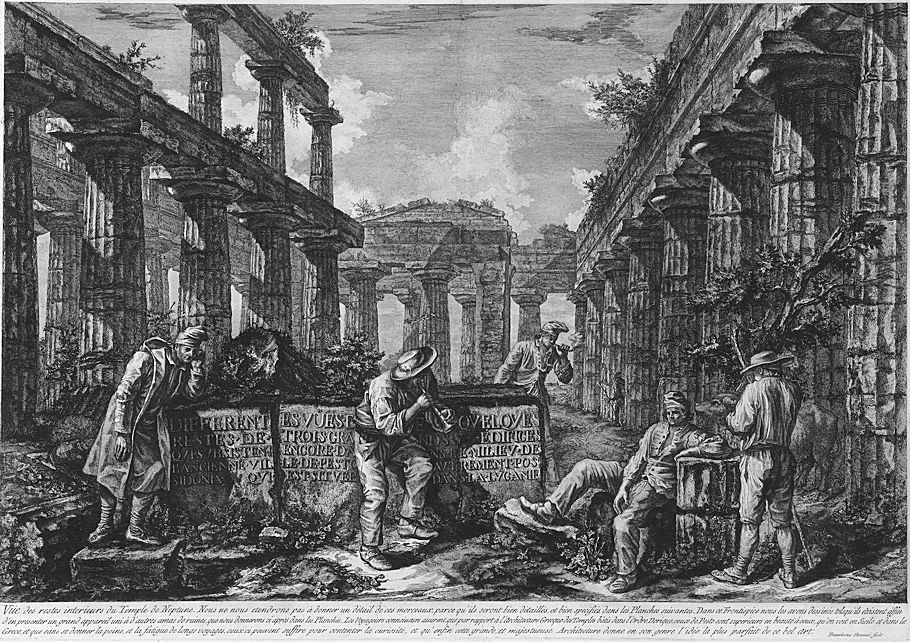
"I've been thinking about your dream to go to Paris."
"Really father?"
"Really."
6 October 1789
French royal family forcibly taken from Versailles.
47 y.o. Francesco Piranesi 1805
Le Antichità della Magna Grecia Parte III
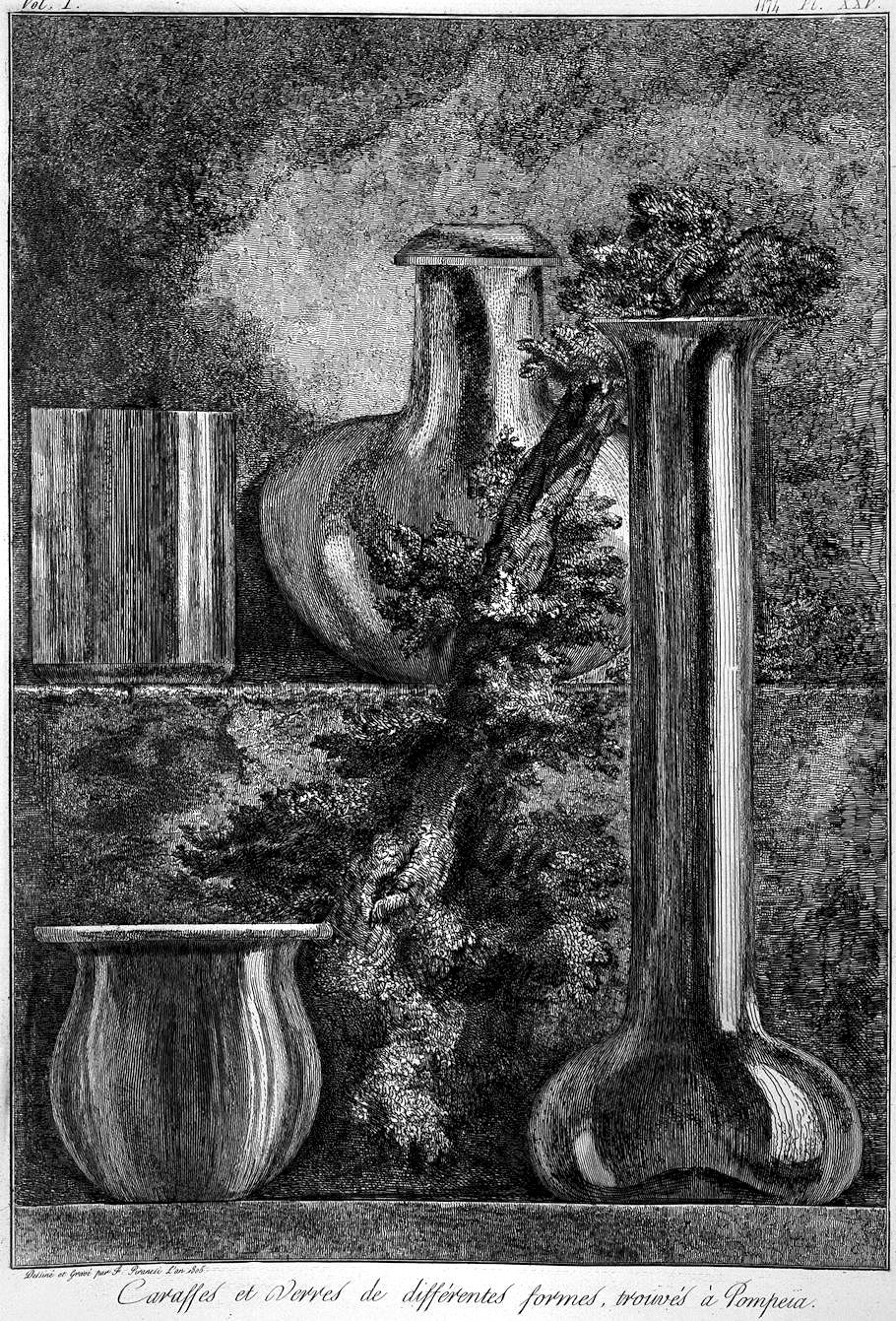
Decanters and glasses of different shapes, found in Pompeii.
Drawn and Engraved by F. Piranesi Year 1805
6 October 1812 Tuesday
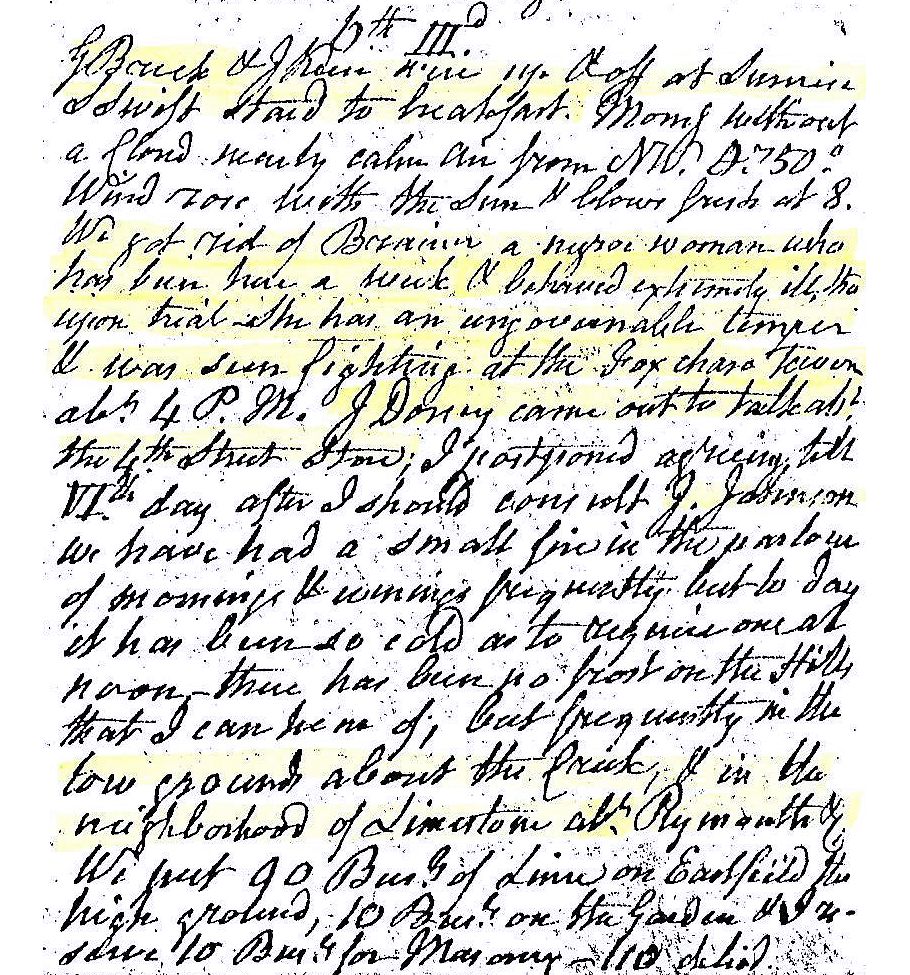
G. Brick and J. Keen were up and off at sunrise. S. Swift stayed to breakfast. Morning without a cloud nearly calm air from NW. Temp. 50°. Wind rose with the sun and blows fresh at 8. We got rid of Braines a Negro woman who has been here a week and behaved extremely ill, tho upon trial. She has an ungovernable temper and was seen fighting at the Fox Chase tavern about 4 P.M. J. Dorsey came out to talk about the 4th Street store; I postponed agreeing till Friday after I should consult J. Johnson. We have had a small fire in the parlour of morning and evening frequently, but today it has been so cold as to require one at noon. There has been no frost on the Hills that I can ..... of, but frequently in the low ground about the Creek, and in the neighborhood of Limestone about Plymouth, etc.. We put 90 bushels of Lime[?] on Eastfield the high ground, 10 bushels on the garden, and I reserve 10 bushels for masonry. 110 ......[?]
6 October 1994
12.
In 1981, I searched for the deeper meaning of duality in general, and diptychs in particular. I wanted to know what the concept of duality's most primal source was, or is. I was already of the opinion that many of our spatial readings and relationships come directly from the morphology of our own bodies. The notion of front and back, and left vs. right stem directly the makeup of our bodies. Our bodies establish the basis for all our orientations. Bi-lateral symmetry is another spatial ordering system that is derived directly from our bodies. Bi-lateral symmetry is manifested through the semi-invisible axis that runs up and down the middle of our bodies. Bi-lateral symmetry is perhaps the step that next leads to the primal source of our concept of duality. On the surface of our bodies there are ten distinct pairs: (from the top down) eyes, ears, nostrils, lips, arms, hands, breasts, testicles, legs, feet. The further distinction can be made as to which individual pairs can act/perform independently of their counterpart.
The largest, most prominent duality in the human body is the combination of legs and feet. In fact, the legs and feet take up half of the body, in terms of height. In this light, one could safely say that at least half of our bodies are in fact manifested dualities.
I am indebted to two articles by William S. Huff:
a. "Symmetry: Man's Aesthetic Response, Man's Contemplation of Himself"
b. "Symmetry: Man's Conceptualization of the Universe"
15.
The crotch is exactly half the height of the human body. There are a number of historical ideas concerning the human body and proportion, e.g. there is a whole chapter in Rasmussen's Experiencing Architecture covering the topic. Sometime in 1979 I had come up with my own interpretation of proportion and the human body. I call it the (so-called) Canon of Polyclitus. The diagram I came up with is a system of concentric circles and squares overlaid a standing human figure, preferably with out-stretched arms. The system of circles and squares is derived from a diagram in Serlio's First Book of Architecture. The use of a standing human figure follows a tradition, used extensively in the Renaissance, particularly related to the notion of the Vitruvian man.
16.
The comparison of the human body's two legs and feet to 15th Century Annunciation paintings is the comparison of two dualities. The duality of the body's two legs and feet presents two virtually identical units, mirror images of each other, yet distinctly separate from each other. Each leg functions separately, however, their full potential is achieved only when they work together. The duality of Renaissance Annunciation paintings represents the end of the separation between God and mankind. The separation between God and mankind started with the fall from the Garden of Eden and ends with the Annunciation to the Virgin Mary. At the Annunciation, the virgin Mary conceives the sperm of God. The feast of the Annunciation is thus simultaneously the feast of the Incarnation--"the Word became flesh."
The two dualities also resolve into a singularity. The two legs become the torso, and God and mankind are united in Christ. The combination of these two dualities creates a metaphor, a metaphor where the human body can be seen to represent the same message as the Annunciation paintings. One leg represents God/Gabriel, and the other leg represents Mankind/Mary. The point where the duality is resolved where the legs become the torso. This point of transition, the crotch, is also the average center point of the adult body height. Christ enters the picture at this center point.
17.
The Timepiece of Humanity, the title I use for this theory, is a phrase I took from Velimir Khlebnikov's (early 20th century Russian poet) opening line of his The Tables of Destiny: "Suppose I make a timepiece of humanity, ..." I first read The Tables of Destiny whenever October 27 came out (copyright 1984). I reread the article sometime in 1991 and was immediately struck by the phrase and realized that my metaphor of the human body being used to measure time is in fact a real "Timepiece of Humanity."
18.
Time (or the 'plane of the present') in the Timepiece starts at the bottom (the soles of the feet) and as time goes on it moves up, first through the feet and then the ankles, and then the calves, and then the knees, and so forth on up through the body.
6 October 2003
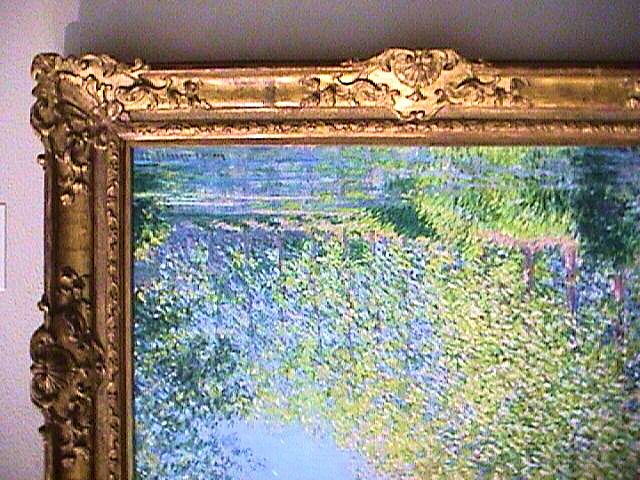 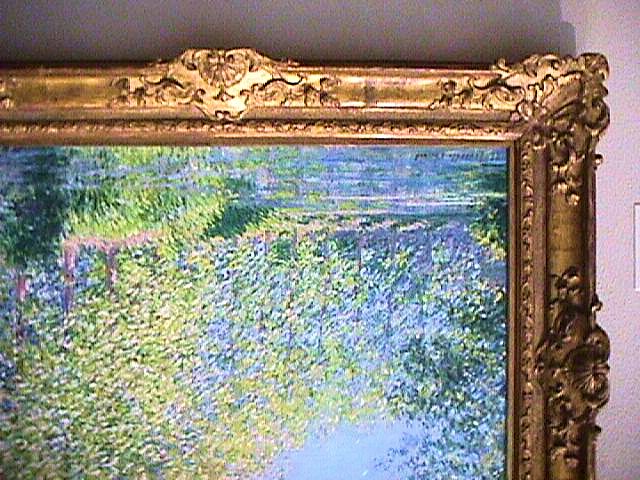 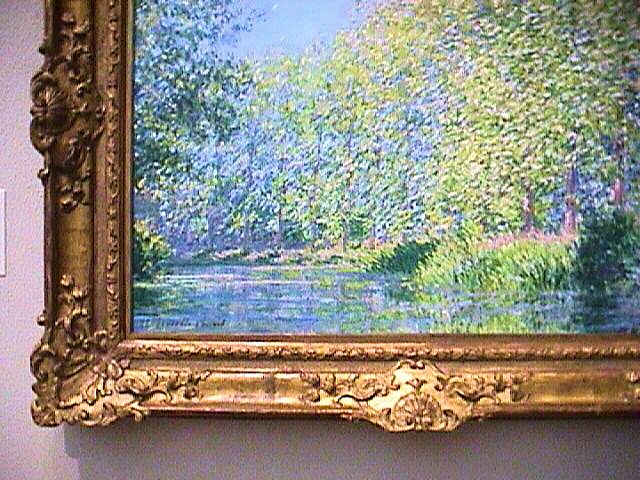 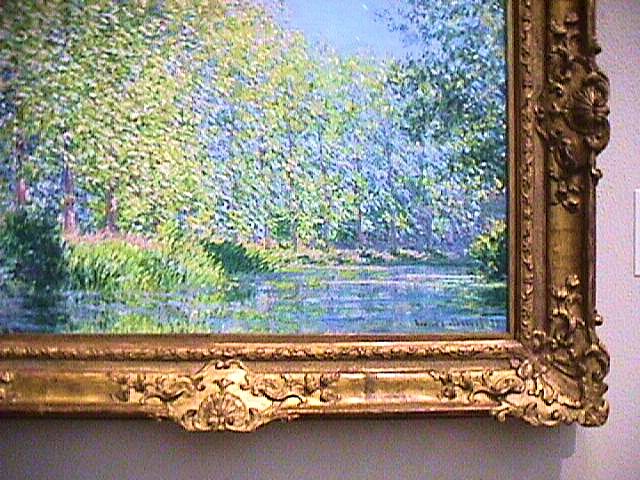
Virtual Museum 158
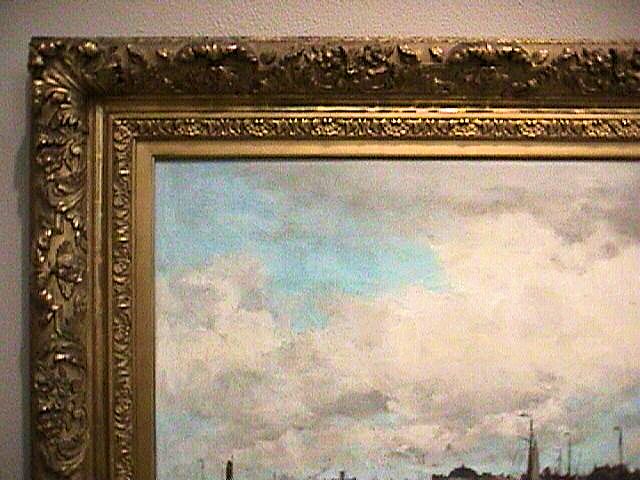 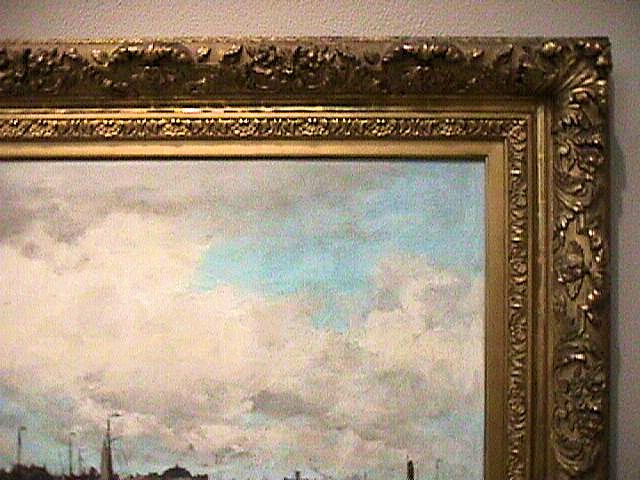  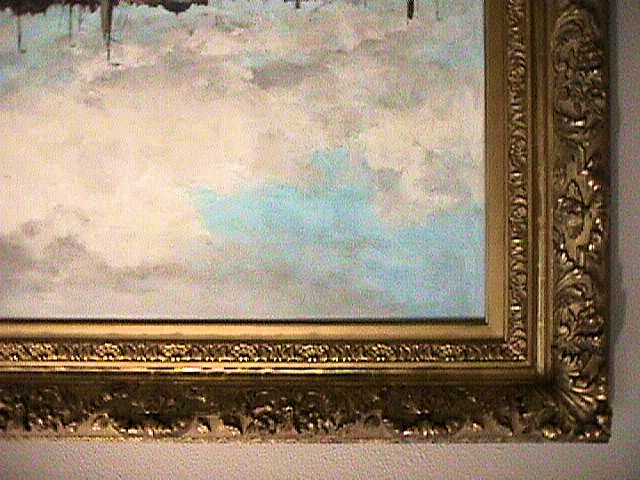
Virtual Museum 164
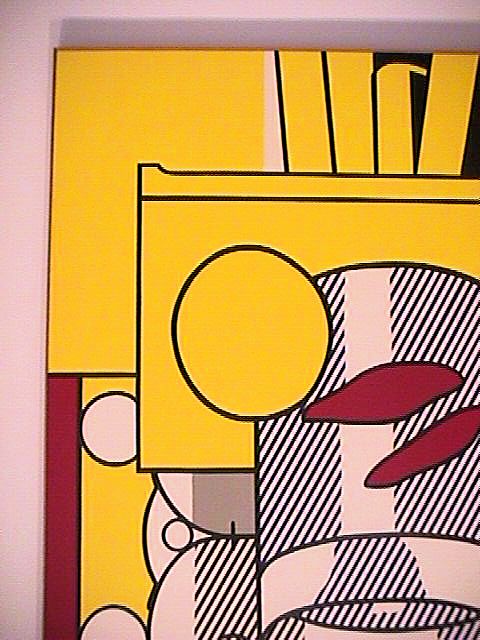 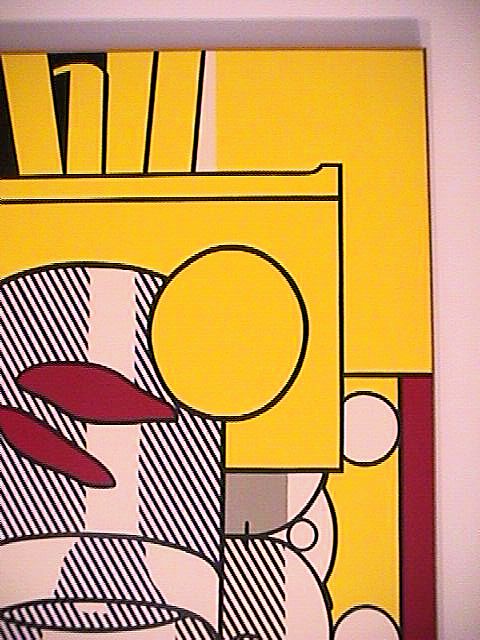 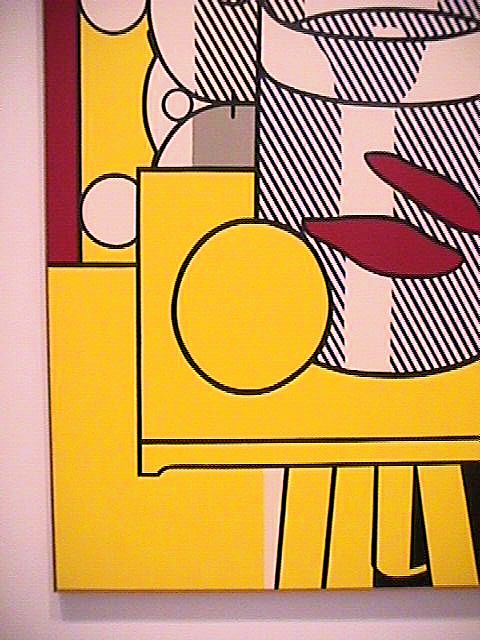 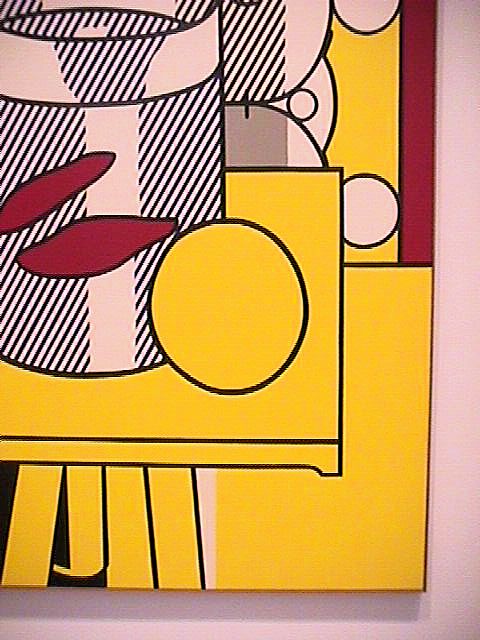
Virtual Museum 181
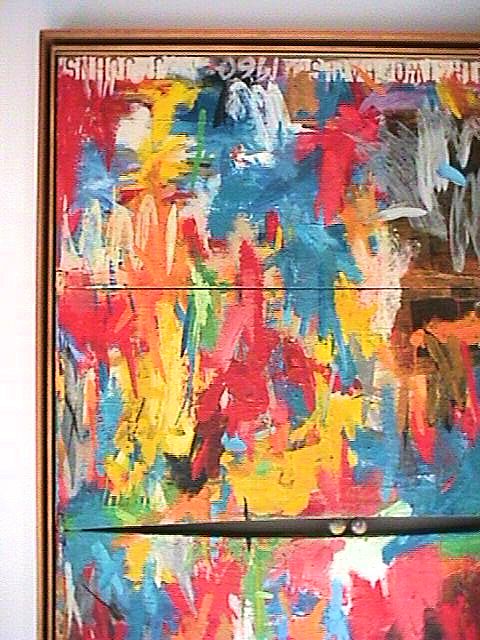 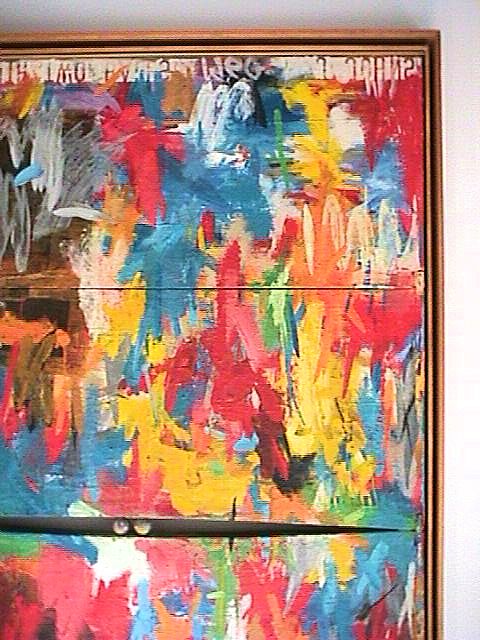 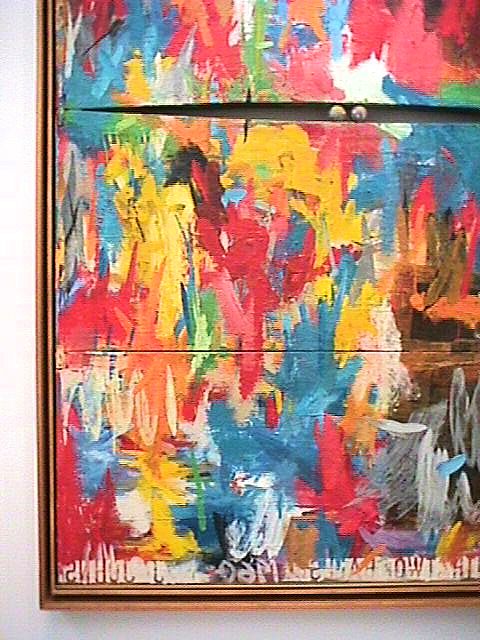 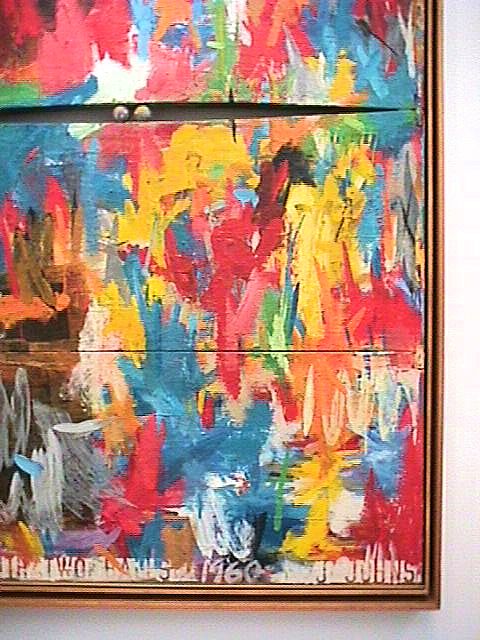
Virtual Museum 191
6 October 2013
Read earlier: "...locale and history have simultaneous real and fabled coordinates, anchored both in actuality and in the archetypes of innocence and experience, paradise gained and lost... ...the reader enters a fictive world with its own unique operating principles, in which past and future conjoin to form a continual present in which the extraordinary meet the commonplace to defamiliarize and release an aura of strangeness and wonder... ...traditional oppositions--realism and fantasy, fact and illusion, history and myth, reason and irrationality--coming together in a complex of significance." --Daniel S. Burt
6 October 2017
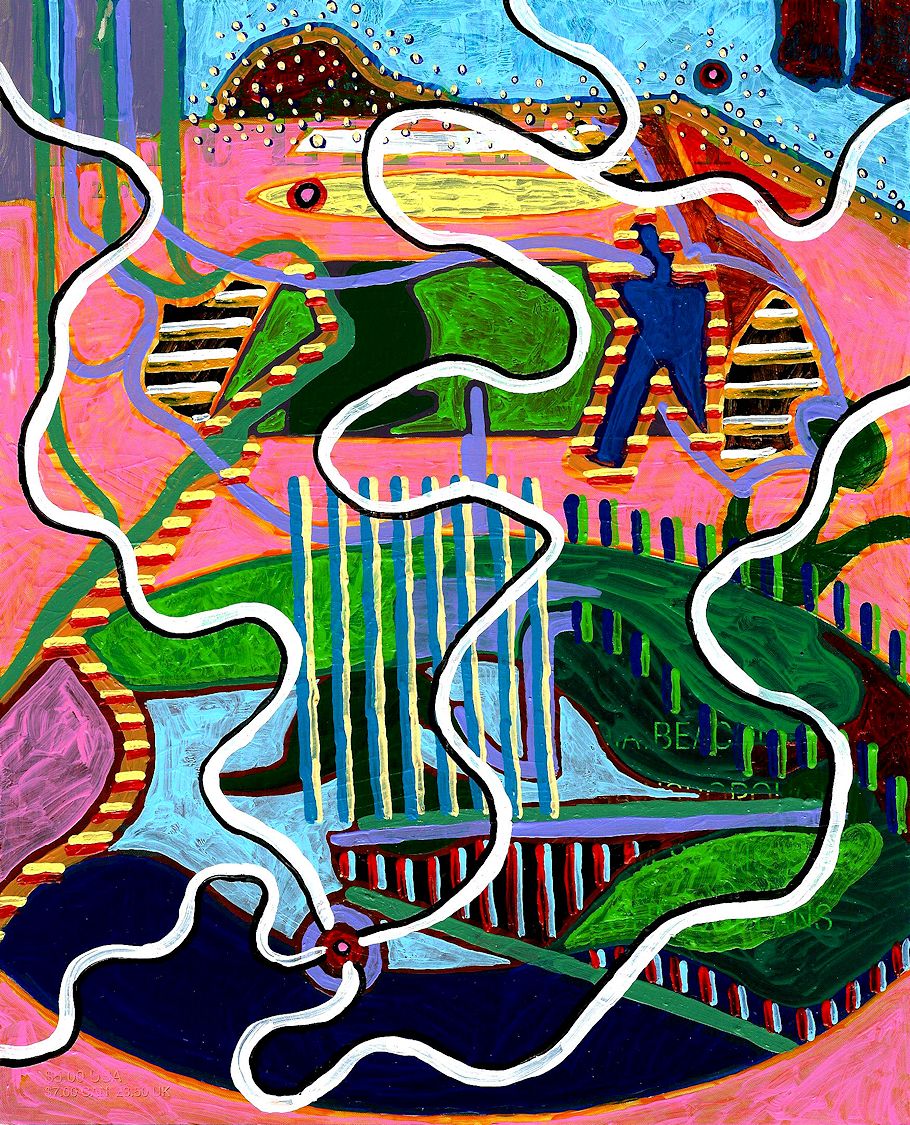
zero nine five
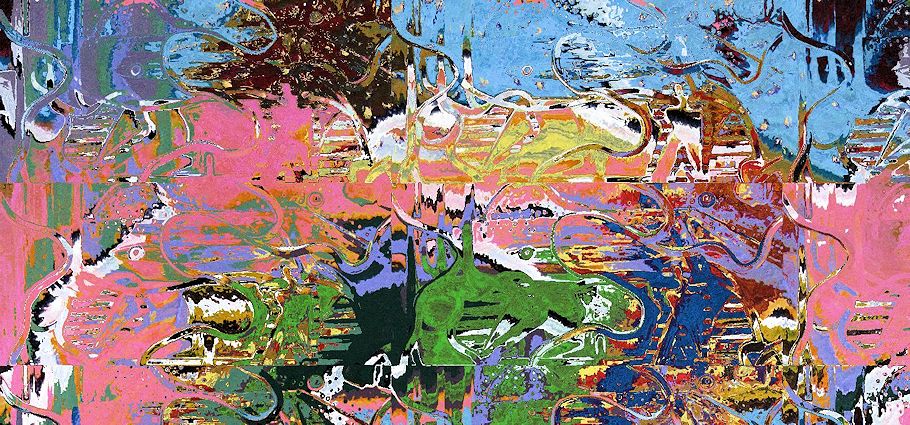
Virtual Painting 469
6 October 2022 Thursday
Shortly after noon, I drove through the Fox Chase/Rockledge neighborhood to visit my parent's and grandmother's graves, and then I drove to the adjacent Jewish cemetery to take a picture.

On the way back home, I drove past Dunkin' Donuts, where the Fox Chase [tavern] Hotel used to be.
Late afternoon I told JP that back in 1976 I read "the composite photostat of Giovanni Battista Piranesi's map of Rome, drawn by him for his book on the Campus Martius, probably of 1762, which now hangs in front of Kahn's desk," and that's what got me to want to know Piranesi and his Ichnographia Campus Martius.
6 October 2023 Friday
Compile a chronology.
The Discovery of Piranesi's Final Project a.k.a. Francesco's Eulogy. Maybe.
|